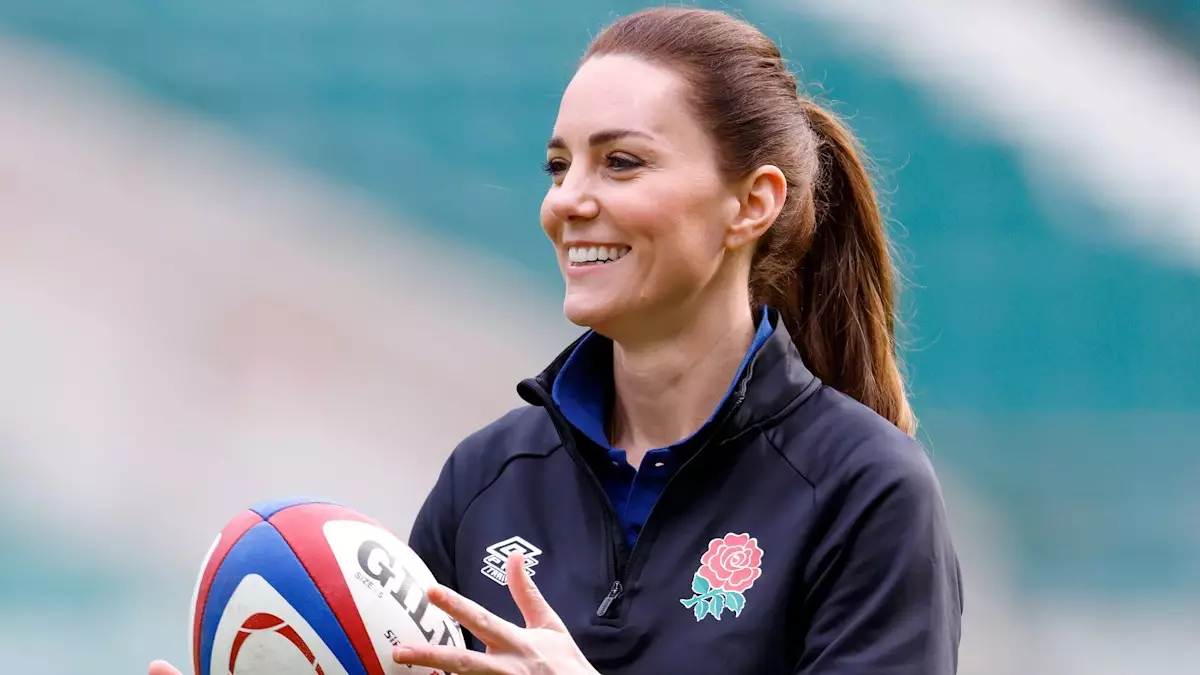In a world obsessed with superficial aesthetics, the true vitality of core strength often gets overlooked. It’s not just about having a flat stomach; it’s about cultivating a resilient, functional body capable of supporting every movement and protecting against injury. Observing public figures like the Princess of Wales engaging in seemingly simple yet remarkably effective exercises reveals a powerful truth: core strength is a cornerstone of overall health. Her ability to sit comfortably in a complex position exemplifies how maintaining a well-conditioned core can transcend age and lifestyle, enabling women to embrace their vitality well into middle age and beyond.
What sets someone like Kate apart isn’t just her natural athleticism or access to personal trainers, but her commitment to developing a comprehensive understanding of functional movement. Her graceful execution of a V-sit, an advanced posture that recruits multiple muscle groups simultaneously, underscores the importance of cultivating not only strength but also mobility and flexibility. Such exercises challenge the core in multi-dimensional ways, enhancing stability, balance, and endurance. They serve as a reminder that traditional ab exercises are just a small piece of the puzzle; true core strength involves integrating various movements that mimic real-world demands.
Beyond the Six-Pack: Embracing a Holistic Approach to Fitness
There is a dangerous misconception floating around: that core workouts are solely about sculpting a ‘six-pack.’ This myth perpetuates a narrow view of fitness, leading many women to chase superficial results instead of building a sustainable, functional body. A holistic approach recognizes the core as an interconnected network of muscles encompassing the pelvis, hips, lower back, and abdominal wall. This interconnected system supports nearly every movement we make, from bending and lifting to twisting and stabilizing.
For women over forty, especially those juggling motherhood and other responsibilities, strengthening this core is not an aesthetic choice — it’s a necessity. It can alleviate chronic lower back pain, improve posture, and boost overall confidence. The secret lies in consistency and understanding that effective core training isn’t measured solely by the number of crunches but by integrating compound movements that engage multiple muscle groups. Resistance exercises like goblet squats, combined with stability-focused techniques such as planks, create a foundation of resilient strength that can withstand daily wear and tear.
Furthermore, dynamic movements targeting rotational and anti-rotational muscles are crucial. Exercises like Russian twists or bicycle crunches challenge the torso’s capacity to move and stabilize during complex motions. Equally, anti-rotational exercises like bird dogs or plank shoulder taps teach the body to resist unwanted movement, fostering balance and enhancing functional strength. These holistic strategies are especially vital for women seeking to preserve mobility and prevent injury as they age.
Mobility and Flexibility: The Unsung Heroes of Core Excellence
A common oversight in traditional fitness regimens is neglecting mobility and flexibility. Yet, these elements are fundamental for sustaining strength and integrity in advanced positions like Kate’s V-sit. Her apparent ease in holding this posture demonstrates excellent range of motion in her hips, hamstrings, shoulders, and spine. Developing this mobility isn’t merely about stretching for flexibility; it involves purposeful movement that enhances your functional ability to perform exercises efficiently and comfortably.
Mobility work complements strength training, ensuring that muscles and joints aren’t stiff or tight, which can hinder progress and lead to injury. For women in their forties, incorporating regular mobility exercises becomes an essential part of maintaining an active, pain-free lifestyle. It’s about respecting your body’s natural range of motion and gently progressing to more challenging positions over time.
Enhancing one’s functional range of motion takes patience and consistency, but it pays off exponentially. When mobility is prioritized alongside strength, the result is a body that is resilient, agile, and less prone to niggles or stiffness. For women, especially those returning to fitness post-childbirth or addressing age-related changes, this approach is empowering. It turns the pursuit of core strength from a fleeting vanity project into a lifelong journey of vitality, mobility, and independence.
—
Transform your perspective on fitness by moving beyond the superficial. Core strength isn’t just a visual goal; it’s your foundation for resilience, confidence, and lasting health. Embrace holistic, functional training—your body will thank you for it.

Leave a Reply